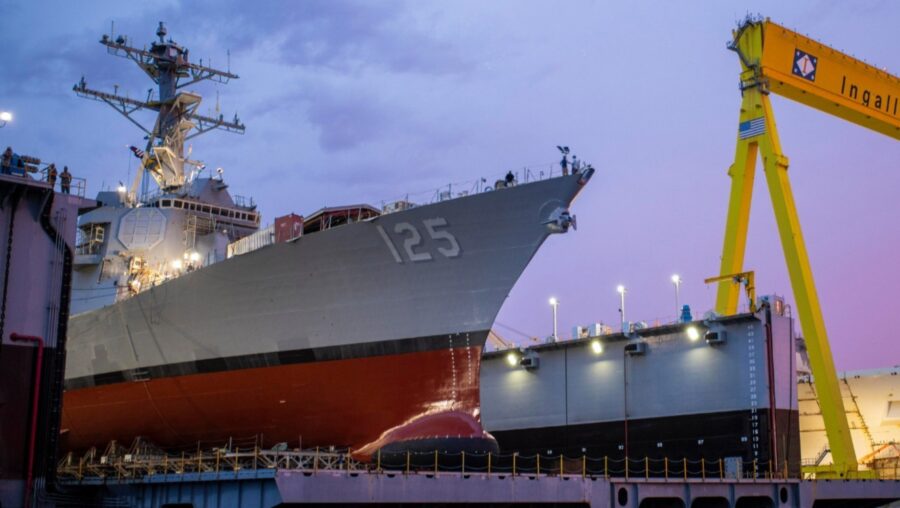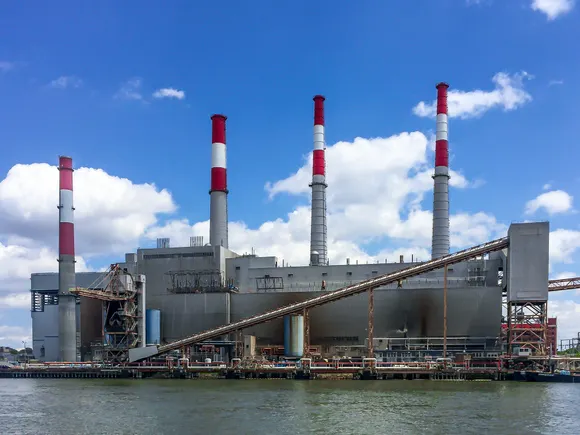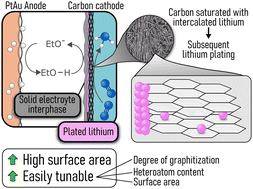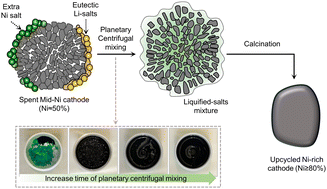What European defense is really looking for: Risk reduction and domestic continuity
[Sponsored] The key is not just building domestic defense industrial bases, but ensuring they also contribute meaningfully to the global supply chain.


U.S. Air Force Senior Airman Hunter Anderson, 495th Fighter Generation Squadron assistant dedicated crew chief, ensures a Royal Netherlands Air Force pilot embarks his F-35 Lightning II during a F-35 cross-servicing event at NATO Allied Air Command’s Ramstein Flag 2025 exercise April 4, 2025. (Royal Netherlands photo by Sgt. Maj. Jan Dijkstra)
To add more cooling capability to the F-35, the F-35 Joint Program Office (JPO) is considering upgrading the Power and Thermal Management System (PTMS) on the global fleet. With increased cooling, the aircraft can support advanced radar, electronic warfare systems, and next-generation processing power. Honeywell has manufactured every PTMS unit for the F-35 to date and has a clear, low-risk roadmap to enhance the system efficiently and cost-effectively.
Breaking Defense spoke with Mike Vallillo, Vice President, Defense & Space International at Honeywell Aerospace Technologies, about the PTMS upgrade path and how Honeywell is supporting supply chain continuity across Europe and Australia.
Breaking Defense: The F-35 JPO is considering upgrading the PTMS on the worldwide F-35 fleet. Tell us about this system and the benefits of upgrading the existing Honeywell-built PTMS instead of replacing it with a completely new system.

Mike Vallillo is vice president for Defense & Space International, Honeywell Aerospace Technologies.
Vallillo: It’s important to highlight that the system is still actively being fielded—we’re now on nearly 1,200 aircraft worldwide. The PTMS has accumulated over one million flight hours, which demonstrates a proven track record of durability, reliability, and performance across all F-35 variants.
We believe an upgrade of the current platform offers a lower-risk, lower-cost solution. Using the existing PTMS, we can meet many near-term Block 4+ capability requirements.
With a software upgrade, we can boost cooling capacity 25% to 40kW by 2029, reducing bleed air usage by up to 41% and thereby extending F135 engine life.
Then there’s a longer-term upgrade path that enables us to get significantly higher than that. Honeywell demonstrated the ability to upgrade PTMS’ cooling capacity to 80kW while reusing 95% of PTMS hardware and 80% of PTMS software, significantly reducing development and retrofit costs, risks, and mission readiness impacts. Upgrades to reach 80kW are already at TRL 7+, ready for Block 4 and beyond.
Again, this is a low-risk approach—minimal hardware and software enhancements, but largely leveraging the existing architecture. That means we avoid making significant changes to the aircraft itself, which would naturally introduce risk, cost, and delay.
There’s also a strategic continuity benefit. From my position supporting international defense programs, we hear consistently from our international customers that they value continuity and interoperability. If a phased OEM-led upgrade is fielded globally, that’s a compelling path to maintaining interoperability between U.S. and allied forces operating together around the world.
Along those lines, the global sustainment model has been a real success story of the F-35 program. In addition to our operations in Phoenix and Torrance, CA, and our depot capability at Marine Corps Air Station Cherry Point, we’ve also established Aeronamic in the Netherlands to support PTMS overhauls. In Australia, we’re working to set up local depot capacity as well.
I see that continuity as a force multiplier. We want foreign militaries to have access to the same world-class sustainment capability as the U.S.—but delivered closer to their own operating bases, increasing readiness and responsiveness.
Part of your international strategy involves helping countries build their domestic defense industrial base while strengthening global supply chains. Can you elaborate on that?
Absolutely. This is a top priority for many of our international customers. Whether it’s the Abrams tank, the F-35, or the CH-47, countries are making significant investments in American defense systems—and they want to invest in building local expertise to go with it. That includes developing skilled labor and integrating domestic companies into the sustainment ecosystem.
In the near term, we’re seeing strong demand for local participation in sustainment activities. Honeywell is supporting this through localized MRO (Maintenance, Repair, Overhaul) depot activations with partners across Europe and beyond. We’re helping local industry sustain critical systems like the AGT1500 engine on the Abrams tank, the F-35 PTMS, environmental control systems, and auxiliary power units.
Partnering with an OEM like Honeywell gives nations greater control over sustainment priorities—meaning more parts, in-region, when and where they’re needed. That translates into faster turnaround times and greater resilience against ongoing global supply chain challenges.
Ultimately, this enables increased readiness by leveraging local industry and talent.

On March 24, 2025, the first US Air Forces in Europe (USAFE) aircraft, an F-35 Lightning II, from the 495th Fighter Squadron was inducted into the Euro-Mediterranean Airframe Maintenance, Repair, Overhaul, and Upgrade (MRO&U) facility in Cameri, Italy. This marks a historic milestone as the first USAFE aircraft to enter an overseas continental U.S. (OCONUS) Regional Depot. (Photo by Scott Swofford, F-35 Joint Program Office)
Returning to PTMS, why is the upgrade strategy so important from a continuity and risk standpoint?
A structured upgrade allows us to retain the benefits of a proven system while extending its capabilities. That’s true for manufacturing, support, and the broader supply chain.
Looking ahead to programs like Next Generation Rotorcraft Capability, or sixth-generation fighter initiatives like GCAP and FCAS, we’re seeing a clear trend: European defense customers want technologies that are developed—and manufactured—within Europe.
Honeywell has a longstanding footprint in Europe. We operate manufacturing facilities in Germany, France, the UK, and the Czech Republic. We have more than 1,000 engineers and scientists supporting advanced R&D at our sites in Brno, Czech Republic, and Krakow, Poland.
And with our recent acquisition of Civitanavi Systems, an Italian leader in precision navigation, we’ve added a powerful new dimension to our European capabilities—especially in autonomous and navigation systems.
Through Civitanavi and our broader EU presence, Honeywell is proud to participate in European Defence Fund (EDF) projects that will accelerate critical technologies for the next generation of platforms.
Any final thoughts?
Honeywell has a proud legacy in Europe, with a growing workforce, advanced manufacturing, localized supply chains, and deep R&D capabilities. Through these regional assets, we’ve supported U.S. and allied defense programs for decades.
Now, with Europe’s defense priorities shifting toward greater sovereignty, domestic capacity, and reduced dependency on U.S. export controls, Honeywell is uniquely positioned as a trusted partner investing in local solutions to help achieve those goals.



































































































![[Updated] U.S. Air Force Mobilizes F-22s and F-35s as Situation in Middle East Escalates](https://theaviationist.com/wp-content/uploads/2025/06/F-22_F-35_CENTCOM-top.jpg)

![[Updated] Sudden Deployment of Dozens of U.S. Air Force Tankers Raises Questions](https://theaviationist.com/wp-content/uploads/2025/03/Stratotanker100Years_2-e1750080240327.jpg)












































